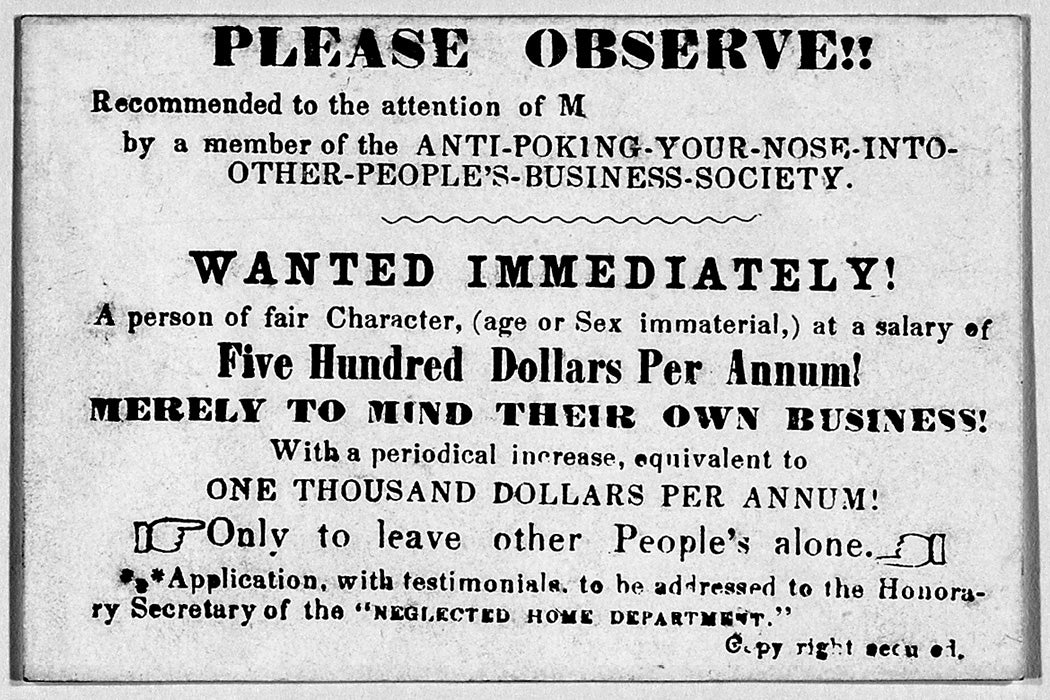In 1829, a fad emerged in American newspapers. Citing the danger of fires, a number of northeastern papers proposed an “Anti-going-to-sleep-with-a-candle-burning Society.” Other publishers suggested the formation of an “Anti-talk-about-your-neighbor’s-business Society,” or, in response to news of a woman said to have died from wearing a tight-fitted corset, an “Anti-too-tight-lacing Society.”
Historian Maartje Janse writes that these jokes were a response to a wave of real “anti-societies” that formed in the early nineteenth century. But they weren’t just jokes. They were part of a resistance to moral reform efforts, often led by women, that became more intense over the following decade.
Janse writes that reform societies get their start with the Second Great Awakening in the early nineteenth century. National evangelical Protestant organizations encouraged the development of local groups to organize Sunday schools, missionary efforts, and Bible study groups. Also among these local groups were anti-vice societies that encouraged the observance of the Sabbath and fought dueling and gambling. Over the 1820s, these groups spread beyond evangelical circles and gradually broke apart into societies organized for specific purposes, including everything from anti-swearing and anti-Masonry to anti-Indian removal and anti-slavery. Also in the mix were temperance groups, which sometimes referred to themselves as anti-intemperance societies. In contrast to eighteenth-century norms in which religious and civic officials set moral standards, these societies empowered anyone who chose to join a society to act as a reformer, monitoring the behavior of their neighbors.
The reformers were no fans of Andrew Jackson, who gambled, took part in many duels, and otherwise engaged in behavior they found abhorrent. But, Janse notes, they elevated the power of ordinary people in a way that mirrored the Jacksonian populism of the time.
This worried some traditional elites who viewed them as upending moral hierarchies. It also bothered Jacksonians, who saw them attacking the “jolly fellowship” of male tavern culture. In both cases, part of the trouble was the idea that women were seeking a role in public life. One frequently republished joke referred to a “Ladies-anti-ambition-to-figure-in-the-newspaper-under-pretence-of-religious-or-charitable-purposes-with-no-useful-result-to-the-neglect-of-your-own-domestic-duties-society.” Janse notes that these jokes didn’t target women operating in more traditional organizations like raising money for orphanages but only went after those claiming roles enforcing moral order.
Weekly Newsletter
As anti-societies, particularly temperance and abolitionist organizations, gained more power in the 1830s, opposition became more serious, and even violent. Real anti-temperance societies formed, fighting back against efforts to ostracize drinkers by pledging not to do business with temperance society members. Some even physically attacked temperance meetings. When abolitionists attempted to form an anti-slavery society in New York City in 1834, opponents formed a mob to fight them. This led to three days of riots in which anti-abolitionists attacked Black citizens and also staged theatrical, racist mock-meetings.
For a country just beginning to evolve toward democratic principles, Janse writes, the jokes and violence—like the anti-societies they were a response to—attempted to answer the open question of who was allowed to speak for morality and the public good.







